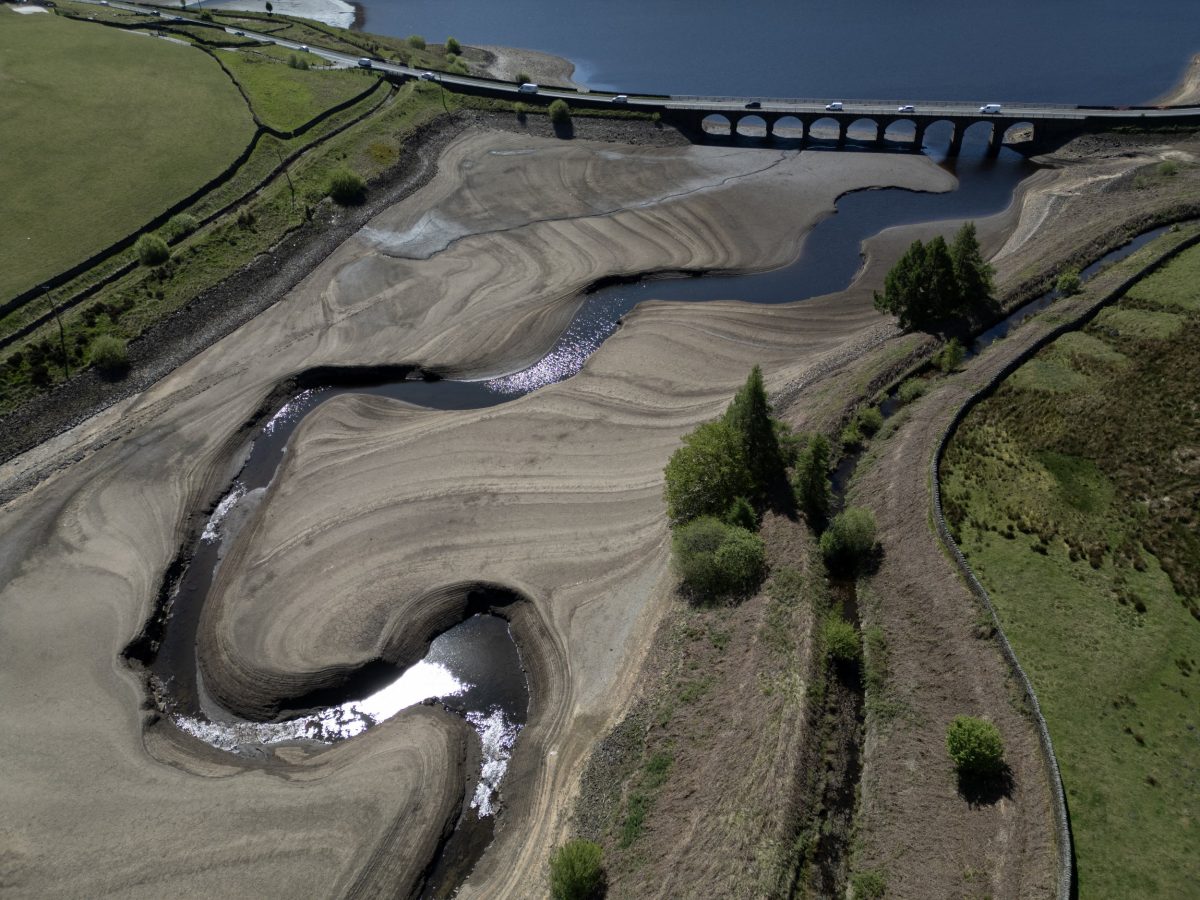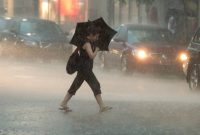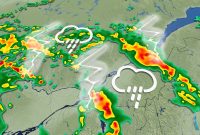Britain’s rivers are facing
unusually low water levels this past summer
This issue might intensify over the next few months, according to climate experts, as certain regions of the nation confront the threat of drought.
The
alert follows the driest spring on record
In England since 1961, following April had only received about half of its usual anticipated rainfall.
The conditions are even more dire in northern England following the record dry spell experienced by sections of Northumbria and Cumbria since 1929.
The Centre for Ecology and Hydrology (CEH) stated in their May forecast that they anticipated nearly the entire UK would experience below-normal or low river levels throughout the month.
The Environment Agency, meantime, stated that the UK is currently at “moderate risk” of drought and cautioned that certain areas could be affected.
Water supply companies might enforce limitations on household usage if rain wasn’t anticipated soon.
.
Amid the drought concerns
The mild climate is expected to persist, with thermometers climbing over 20°C across much of the nation throughout the week, and staying warmer than Ibiza through the upcoming weekend.
It’s expected that temperatures will soar to around 25°C this coming Sunday across western regions of England as well as portions of Northern Ireland, Scotland, and Wales.
Record low rainfall continues
By Friday, 80.6 mm of rainfall had been documented across the UK during spring, which is almost 20 mm below the lowest seasonal total of 100.7 mm established in 1852.
The Met Office stated that with over two weeks remaining in the season, it’s still too soon to determine where this spring will ultimately stand in terms of ranking.
However, the Environment Agency stated in their weekly summary of rainfall and river levels covering May 7-13, “River flows declined at almost all” of the 54 monitoring locations they track.
In May, precipitation levels varied between a high of 10 percent above the historical average and a low of only one percent of the typical rainfall anticipated for that month.
The cumulative rainfall in England from the start of May up until day thirteen amounted to just 4 millimeters, which represents roughly six percent of the anticipated monthly precipitation.
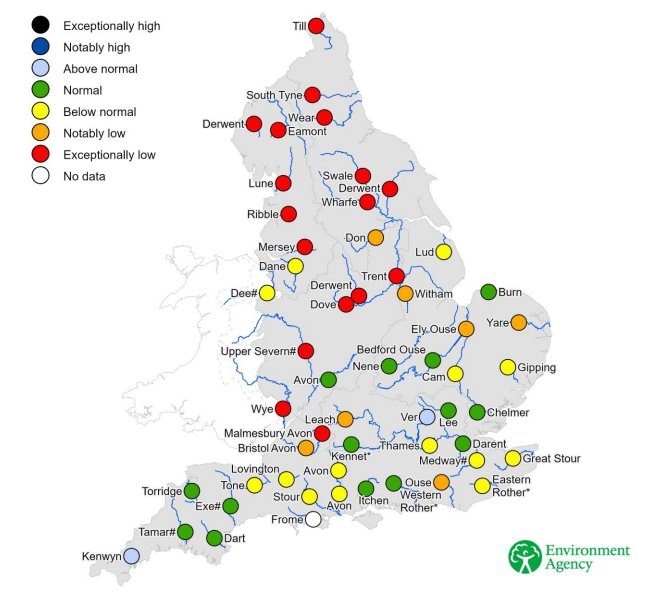
Just two locations rated above average, one in Cornwall and another in Hertfordshire, with 14 others categorized as typical, generally scattered throughout southern England.
An additional 14 locations were found to be below average, whereas seven sites were marked as “significantly low,” and 17 sites were categorized as unusually low for this time of year.
The 38 regions identified as vulnerable to drought stretched throughout all of England, with the most significant impacts observed in the Midlands, northwest, and northeast parts of the country.
The forecast for late May indicates lower than average river levels throughout much of the UK, with the exception of southern Wales and southwest England, where waterflows are expected to remain typical.
Scotland and Northern Ireland ought to stay regular from May through July as well.
Drought not official yet
The National Drought Group, a committee headed by the government responsible for declaring official drought conditions, cautioned that the coming weeks leading up to late May would be “critical.”
The nation has not been declared as being in a drought yet, even though the weather conditions have been unusually arid.
The scarcity of rain will significantly affect farmers and food production, potentially leading to an increase in imported goods.
The most recent drought occurred from June through August 2022, coinciding with the second-hottest summer recorded since 2018 and marking the fifth driest period since the 1890s. This drought followed six consecutive months of exceptionally arid conditions.
The Met Office stated that the cause of the extended period of warmth and significant aridity has been high-pressure systems.
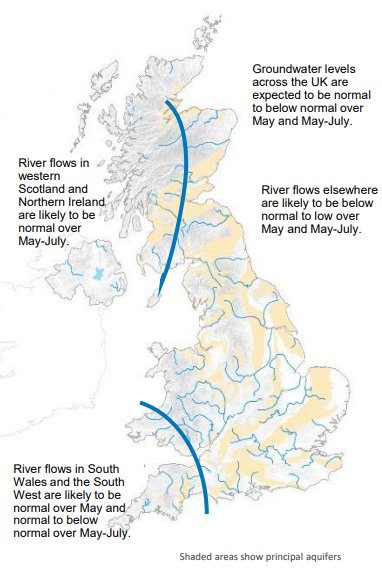
This year has seen the most extensive areas across the UK affected by wildfires due to the dry weather, more so than in previous years.
On Thursday, firefighters were sent to tackle a fire at an area spanning 800 meters in Cumnock, located in East Ayrshire. Additionally, another blaze in Bathgate, within West Lothian, required five full days for crews to extinguish completely.
Also, six adolescent males have been charged following a deliberately set fire at Portlethen Moss, close to Portlethen in Aberdeenshire, which occurred last Saturday.
The Scotland-based Loch Lomond and the Trossachs National Park Authority reported an “unprecedented” increase in the number of dumpster fires observed this year.
Hundreds of
wildfires were reported across Northern Ireland and Scotland last month following a prolonged period of dry weather
.
Blue skies forecast
Despite the drought concerns, the Met Office said blue skies would continue for much of the coming week.
Tom Morgan from the Met Office stated, “This upcoming weekend will essentially carry forward the pattern observed over recent weeks with abundant sunshine.”
“A few caveats, eastern parts of the UK will see generally cloudier skies in the mornings first thing, both tomorrow and on Sunday.
Read Next:
Thames Water suggests possible hosepipe ban as it intensifies drought preparations
And it’s these eastern regions where conditions have remained quite cool and overcast recently. So if you find yourself along the English North Sea coast or particularly in northeast Scotland, expect some persistent low clouds with temperatures staying relatively low. However, for most areas, sunny skies should prevail during the afternoon hours, bringing temperatures into the lower 20s.
Tomorrow, likely temperatures of around 23°C or 24°C are expected in various regions.
Sunday might likely be the somewhat milder day with temperatures ranging from around 22°C to 24°C being more broadly spread throughout the western regions. This includes areas such as the central part of Scotland, Northern Ireland, northwest England, eastern Wales, and southwest England; occasionally reaching up to about 25°C in some spots.
Morgan mentioned that there could be rain towards the end of the month; however, it might not be sufficient to be “helpful” for farmers following the period of drought.



